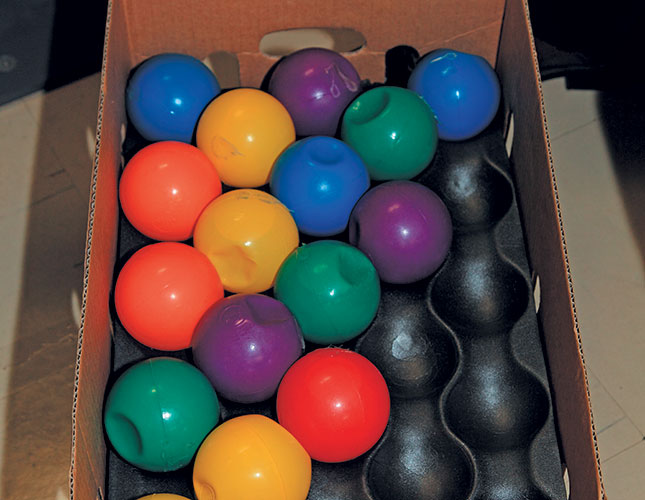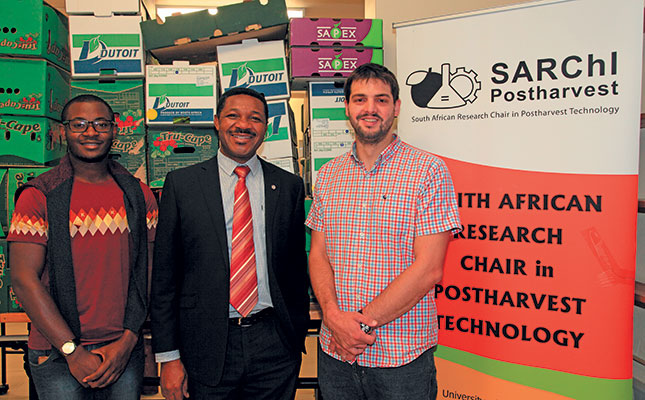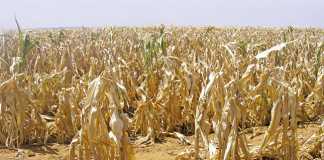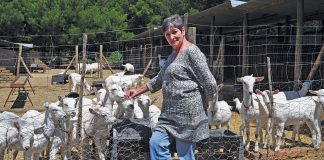
Photo: Glenneis Kriel
Horticultural packaging had been largely neglected by academic researchers when agricultural engineer, Prof Linus Opara, decided to specialise in this field in the 1990s.
“There was a growing understanding of the pre-cooling process and cold chain management of fresh produce, such as fruit, but hardly any scientific research available on the impact of packaging and packaging design on fruit quality and shelf life. I focused my research in this field at Massey University in New Zealand,” he says.
READ 6 tactics to achieve successful sales at the market
Today, Opara is a distinguished professor in the Department of Horticultural Science, and Research Chair at the South African Research Chairs Initiative (SARChI) in Postharvest Technology, at Stellenbosch University.
“Back then, and even in some cases today, packaging design was merely based on a layperson’s perceptions of what is required, as well as on industry experience,” he explains.
“For example, cardboard boxes traditionally used to have two holes on the sides, commonly referred to as ‘hand-holes’. They were there for ease of carrying and had nothing to do with ventilation. Today we know that holes not only need to be of a specific size to allow enough cold air to ventilate throughout the carton, but that the shape of the holes and their positioning have an impact on the efficiency of the cooling process.”
The turning point in packaging design came with the growing realisation that horticultural produce continued to respire and lose heat and moisture after harvesting. “This indicated that fruit required high humidity and low-temperature storage for the best postharvest outcome,” Opara explains.

Achieving the optimal packaging design for horticultural produce is, nevertheless, much easier said than done, as different types of fruit have different packaging requirements.
Specialised packaging is also required for different markets, such as for displaying produce on supermarket shelves. To complicate matters further, the production process and supply chain management also have an impact on produce spoilage.
Multi-faceted approach
Stellenbosch University is one of the only research institutions in the world to use a multi-scale and multi-parameter approach to packaging.
Opara’s multi-disciplinary research team, consisting of engineers and horticultural and food scientists at the SARChI, study the impact of packaging design on the cooling of fruit, moisture loss and spoilage, all of which affect fruit quality.
Research goes beyond the analysis of physical cartons to include the relationship between fruit and packaging, as well as the smaller units or internal packaging used inside cartons, such as trays and polyliners, the stacking of cartons on pallets, the way in which pallets are stacked inside containers, and the impact of the shipping environment on cooling performance.
Packaging is also evaluated for its ability to withstand mechanical stress.
The United Nations’ sustainability goals for the energy efficiency of materials used and the amount of wastage produced are also taken into account.
Opara uses the example of table grapes, sold by one of South Africa’s leading retailers, which were sold locally in the same internal packaging as used for the export market – multiple layers of polyliners, carry bags and punnets.
Research by SARChI found that this was unnecessary, as the fruit followed a much quicker and more direct route to the local market.
READ Marketing to SA’s changing black middle-class consumers
“By using fewer layers inside cartons, the industry can significantly reduce its pre-cooling energy costs and environmental footprint without adversely affecting produce quality,” he says.
Over the years, SARChI has carried out valuable work on packaging for apples.
“For one of our studies, we investigated fruit weight loss and cooling rates in export apples. Closer evaluation of the packaging design and packaging material revealed that the ventilation holes were the problem.
These provided perfect ventilation when the cartons were used individually, but they became blocked when the cartons were stacked on top of one another on pallets inside the shipping container. Adjustments to the positioning of the ventilation holes helped to rectify this problem,” Opara explains.
Pomegranate research
The research team has established itself as a world-leader in research on postharvest technology for pomegranates.
“When we started our research on pomegranates eight years ago, we were quite concerned about the internal quality of the fruit. The industry was still in its infancy, and with no way to rapidly and non-destructively check the internal quality, we were afraid that fruit of a poor quality might unknowingly be sold.
This could have had a damaging effect on our newly emerging industry, which was eager to be part of the lucrative international market. We therefore suggested that the industry process and sell the high-value arils rather than the whole fruit,” Opara says.
To achieve this goal, the team evaluated the ripening of the pomegranate, as well as the effect of using different types of packaging film and gas mixtures on respiration, moisture loss and microbial load.
A modified atmosphere packaging (MAP) protocol, the process of altering gaseous composition inside packaging, was then developed for arils.
The research team is currently evaluating the optimal method of packaging fresh, whole pomegranates.
“Soft fruit, such as stone fruit, is very delicate and prone to bruising, so these fruit types are usually packaged in only one layer. Pomegranates are not as delicate and do not ripen after harvest, but they’re very heavy.
To prevent fruit from becoming squashed or damaged, they should also be stacked in only one layer,” Opara says.
Several new trends have emerged in the industry in recent years. A few companies, for example, have started using collapsible plastic containers instead of corrugated fibreboard cartons for packaging. Although this has the advantage of being recyclable, it poses a challenge to logistics.
“Trade in fresh produce usually flows one way and it would be difficult to get the containers back to their place of origin. It’s a different story if the containers are just used on the farm.
There are also health concerns about the reuse of plastic containers – farmers and exporters using them would need proper facilities to decontaminate the containers after use. The containers could also turn into a source of contamination, especially fungal diseases, for other fruit,” Opara says.
More with less
Today, less material is used in the manufacture of cardboard boxes without affecting the containers’ strength or durability.
In some cases, this has been achieved through reinforced corrugation inside the panels.
This has reduced both cost and wastage, according to Opara.
Greater environmental awareness has also resulted in consumers being more demanding about the way in which produce is packaged. There is also a growing insistence on recyclable and biodegradable packaging material, and individual fruit sold without packaging.
“Consumers are constantly raising the bar of what they want, creating a lot of pressure for the industry. On the one hand, consumers want a variety of fruit produced all year round in environmentally friendly ways, but they also want their fruit to be of good quality, and cheap.
“Selling all fruit without packaging will create a lot of logistical challenges. Many consumers are vocal about not wanting plastic bags, but, at the same time, most of them are still buying plastic shopping bags and not using recycled bags when shopping,” Opara says.
A continual need for innovation
The South African fresh produce sector needs to keep abreast of technological developments to maintain its position as a leading fruit supplier on the international market.
“Our ability to survive and create new markets relies on our ability to innovate. The country therefore needs to be at the cutting edge of technological development and keep up-to-date with consumer trends.”
The key to achieving this is to develop human capital.
“You need to be innovative. You can’t afford to become dependent on other countries for
the latest technologies to increase productivity and add value, otherwise, ou’ll merely play catch-up.
We need to continually invest in young people to become innovators and industry leaders, and equip them with the right tools in a conducive research environment, while providing the necessary mentorship to help them lead the way,” he says.
Email Prof Linus Opara at [email protected].













